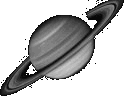|
Interesting.....
I have found a way to map biology?
"Gene" as "generalisation" of a kind which cannot be seen without a "specification".
Example: "wheeled vehicle" is a generalisation (wheeled) that is tagged to a specification ("vehicle" in this example).
LOGIC involves "Path". We say something is "logical" when a clear and straightforward path opens up to go from option "a" to option "b"; provided all other variables are regarded as neutral in the space "a; b; a/b variation".
So LOGIC is "artificial time" or default time (as "a" and "b" and an alternative way to go from "a" to "b" defines a DIFFERENCE between "a" and "b" (the default connection between "a" and "b" which I could call a "gene" as it generalises "a" and "b" via mutual reference "a" to "b") ; and a SAME between "a" and "b" (the logic or "special path chosen from "a" to "b" "
locates "a" and "b" via a SECOND mutual get-together space.
"Tick" implies "approved" implies "passed muster".
Suppose that "gene tic" might fit this pattern: "generalisation (specific)* passes muster"?
The * is because "specific" ALREADY gives the pattern "passes muster" so to avoid double-defining in portraying a number-free view of these patterns: I must separate the two ways of "passing muster".
This suggests: "gene tic" as "generalisation two-dimensionally specific" ... what would that mean?
Example: "wheeled snow vehicle"?
Chimpanzees versus humans:
IF "gene" means "generalisation (specified somehow) such as "generalisation about Chimpanzee(s?)" ; and "gene, human" meant "generalisation about human (s)...
to see BOTH patterns would generate interference fringes. (?)
To SEE generalisation(s) about chimpanzees AGAINST a background of generalisation/s say about humans....how would you know which was which?
The letters "C", "G", "A", "T" might be interesting seen as the 4 bases of "do not agree" that is of "conservation of differences":
"C" speed of light (the comparison of comparison: the mutual background against which difference is seen by an outside observer of the "do not agree");
"G" the constant of gravity, of coming together; the constant of mutual space between the two "do not agree" items so a constant of fine structure where the observer seems to see themselves as occupying the middle ground (so his space seems curved)
"A" the constant of action which cannot be seen by an outside observer so seems to involve a jump or sudden change between the two items
"T" the constant of stillness (time) where everything is in harmony; the observer cannot see anything happening
If "CGAT" is a map of "every way an observer can switch on and off without disturbing what he/she is observing AS FAR AS HE?SHE CAN TELL:
then to compare CGAT from one species to another would involve turning generalisations ON and OFF or deleting sequences or inserting sequences....!?
To DEFINE deletions and insertions and CGAT would require duplications...
?
|



